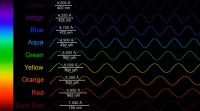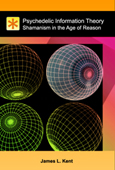
Psychedelic Information Theory : Chapter 04
Limits of Human Perception
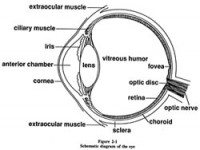
Figure 1 : The human eye has evolved to detect visible light in a very thin spectrum, and is functionally limited by density of photoreceptors and compression of visual data sent along the optic nerve.
Any discussion of psychedelic hallucination is a discussion of the spontaneous emergence of perceptual information within human consciousness. Human perception is limited by the capacity of sense organs (Fig. 1); the speed and architecture of the neural network; and the number of distinct perceptions the brain can analyze at any one time. Despite functional limitations, human consciousness is seamless, meaning that each perception and behavior flows smoothly from one to the next. When consciousness is stable perception and behavior is seamlessly integrated; when consciousness destabilizes perception and behavior loses cohesion until we are no longer in control of our thoughts and actions. Destabilization of consciousness can happen all at once, in the case of being knocked unconscious, but more often it happens incrementally as various aspects of consciousness enter into a low-power subconscious or unconscious state, as in going to sleep.
Psychedelics are unique in that they can both enhance and degrade perceptual limitations by orders of degrees; psychedelics can obscure and distort perceptual data or they can enhance resolution and generate expanded states of consciousness. These contrasting results may be dose dependent, but it is also possible that psychedelics simultaneously produce perceptual degradation and enhancement. Psychedelic hallucinations are often described as being beyond the limits of human imagination, a trait which is offered as de-facto evidence of expanded consciousness or supernatural origin. Since the boundaries of the human imagination can be modeled with some close degree of accuracy, any substantial discussion about the nature of psychedelic hallucination must therefore start with some basic assumptions about the limitations of human perception, and thus the limitations of expanded consciousness.
The Visual Spectrum
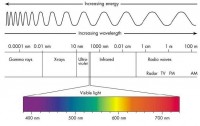
Figure 2 : The EM spectrum ranges from gamma rays, which have a very short wavelength and very high energy, to radio waves, which have a very long wavelength and very low energy. Visible light makes up a very small portion of the spectrum.
The human visual spectrum has evolved to work best in a small window of sunlight that penetrates the Earth’s atmosphere, comprising the white-light band seen in a rainbow (Fig. 2); roughly the 400-790 THz (terahertz) energy range, energy which oscillates on the order of hundreds of trillions of cycles per second. The smallest wavelength of visible light is violet, which is only 380 nm (nanometers) wide and travels with the highest frequency. Red, by contrast, is 750 nm long on the other end of the visible spectrum, and at twice the length it travels at half the frequency.1 Unlike some organisms, the human eye does not see into ultraviolet or infrared rages, nor does it see microwaves, radio waves, x-rays, gamma rays, or anything that falls out of the visual spectrum. This applies to night vision and dark-adapted vision. The dark-adapted eye utilizes the rod cells as opposed to the cone cells of daylight vision; rod cells are more photosensitive and more numerous, but they lack the color sensitivity and detail resolution of daylight rendering.2
Subjects on psychedelics often report increased luminosity and saturation of colors, as well as halos or auras of light surrounding objects. In closed-eye or low-light environments subjects report vividly saturated geometric matrices, often rendered in swirling palettes of fluorescent purple and neon green.3 All of these reports fall within the expected range of visible color spectrum, with the dark-adapted eye finding more sensitivity in the shorter-wavelength, higher-frequency, violet to green ranges (Fig. 3).
There is speculation that some aspects of psychedelic hallucination are the result of tuning the brain to receive radiation at a wider range than normal; bands associated with electromagnetic, metaphysical, morphogenetic, Akashic, or geomagnetic fields. The spectral argument posits that the human brain is like a radio receiver for consciousness, and psychedelics allow the user to tune the brain to new perceptual frequencies, possibly quantum or higher dimensional in nature. This metaphor may make intuitive sense, but no research exists to confirm any spectral advantage to psychedelics other than increased photosensitivity and some visual acuity at low doses.4,5,6 Subjective reports indicate that psychedelics may increase auditory or synesthetic sensitivity to background electromagnetic noise, and the perception of energy fields or auras emanating from living organisms is reported often enough to warrant further scientific scrutiny, but these claims have not been tested rigorously enough to be conclusive.7
Visual Frame Aliasing
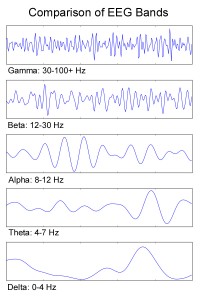
Figure 4 : Comparison of EEG bands over one second of activity. Gamma (30-100Hz), Beta (12-30Hz), Alpha (8-12Hz), Theta (4-7Hz), and Delta (0-4Hz).
Seamless perception relies on rapid frame updating to render external changes in real time. Humans can render changes in reality at roughly 13-15 frames per second (fps, or Hz), which means that our perception of reality fully refreshes itself roughly once every 77 milliseconds (ms). Human frame perception is exploited by animation and film, which updates at 24 fps, and television, which updates near 30 fps. Computer monitors and high-definition televisions refresh at 60 Hz or higher, and at this rate human perception of motion is entirely seamless.8 The rate of human frame perception corresponds roughly to the alert Beta range of waking human consciousness (12-30 Hz) seen in EEG readings (Fig. 4).9 Any event which happens faster than 1/60th of a second (16.6 ms) falls between perceptual frames and is considered to be subliminal or imperceptible to human consciousness.10 Seamless frame rendering is also called temporal aliasing, and can be subverted by a variety of common phenomena, including stroboscopic lights which break motions into jerky snapshots, and wagon-wheel illusions where rotating spokes appear to stop or spin backwards.11,12,13
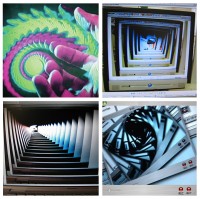
Figure 5 : Video feedback stacked as few as 8 to 16 frames deep is isomorphic of fractal recursion, visual echo, and nonlinear frame destabilization associated with psychedelic hallucination. Click for video.
In addition to retaining visual information, perceptual frames hold the totality of multi-modal sensory rendering. Smooth frame aliasing preserves semantic state information from one moment to the next, and retains fidelity of the limited information we keep active in our working memory. There is evidence that the brain can track multiple object layers for each frame;14 possibly corresponding to the number of distinct items we can normally hold in working memory, which is about seven.15 Frame rendering is a distributed cortical task modulated by the aminergic system. High aminergic modulation of the frontal lobe is a good indicator of external frame alertness. Any drug which interrupts the precise timing of the aminergic modulatory system will also disrupt the seamless nature of temporal frame aliasing in the same way that a strobe light disrupts the motion of a spinning wheel. Temporal aliasing hallucinations include frame stacking, frame delay, frame freezing, frame reverse, frame echo, and infinite frame regression; all of which are considered to be uniquely psychedelic (Fig. 5).16 The sensation of hallucinogenic frame stacking indicates that psychedelics may create a temporary frame decay buffer that allows for simultaneous multi-frame analysis and increased complexity of visual comprehension. Subverting or enhancing the functional limits of visual frame aliasing may be an indication of expanded consciousness.
Visual Frame Resolution
Human visual resolution is limited by a number of factors. The first limitation is the density and distribution of retina in the eye; 130 million photoreceptors feeding into 1.2 million optic projections, with a spatial compression ratio of roughly 100 to 1. Photoreceptors in the eye are distributed in rings with color-sensitive cones clustering towards the center and contrast-sensitive rods filling the periphery.17 Despite the large number of photoreceptors the actual field of vision is incomplete. Including the blind spot where the retina attaches to the optic nerve, as much as 20% of peripheral vision contains gaps that must be filled with progressive rendering. Incoming rings of visual data are then smoothed into completed lines and shades in the visual cortex; the image is then passed forward in two divergent projections for spatial and object analysis; and finally the finished image reaches multi-modal convergence in the PFC.18,19 This is a fair bit of signal juggling for a seamless process to handle at 15 frames per second.
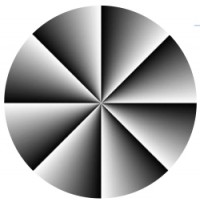
Figure 6 : The peripheral drift illusion (PDI) is easily seen when the figure is in the periphery. Research suggests the illusion is based on temporal differences in luminance processing producing a signal that tricks the peripheral motion system.
Even though human vision employs elaborate compression and reconstruction techniques, the human eye can detect visual detail at resolutions into the micrometer range. From a meter’s distance the human eye cannot detect detail under 100 micrometers in length, making print resolutions of 300 dots-per-inch (DPI) entirely seamless. Some estimates put the detail of human visual resolution at 14 million pixels per the entire visual field; others limit vision by bandwidth of nearly 9000 kilobits per second; or by the 3D topographical field-rendering limit of 10 billion triangles per second, or 760 million triangles per frame.8 Human detail resolution is only reliable near the center of vision; many optical illusions exploit perceptual filling functions of the periphery (Fig. 6).20,21,22 Given the mechanical shortcomings of peripheral rendering, these estimates should be taken as visual saturation points as opposed to functional capacities.
The rendering of visual information may be the most complex and energy-intensive task of the human brain. Seamless visual perception requires precise neural firing. When perception destabilizes the visual field falls apart; the most commonly reported form of visual destabilization is diplopia or double-vision. Since visual rendering is so rich and complex it is potentially the easiest part of the brain to destabilize and the most ripe for exploitation. In other words, visual rendering is so elaborate it can be easily fooled by hallucination and illusion.
Dreaming, Imagination, Psychosis, Hallucination
While the information resolution of imagination and dreams is difficult to measure, it is widely agreed that dream perception is somewhat less resolved in detail than waking perception. Dreams are often incomplete; contextual state data is not retained from frame to frame; and thus the durability of dream data falls apart under close scrutiny. Sometimes dreams can be vivid to the point of being indistinguishable from reality, containing people and places and narratives that retain state information over many different sequences, but more often dreams are fleeting and half remembered, and last for only a few seconds before fading.
Visual rendering of human thought is more durable than dreams but generally of very low detail. Humans can imagine objects, people, and places in their minds, but human memory and imagination are not typically photorealistic. Human memory is more semantic than eidetic, meaning that waking thoughts are mostly verbal, emotional, and only minimally visual. Most humans can imagine basic shapes, silhouettes, and sensual concepts; a smaller percentage can imagine topographical maps and rotate 3D objects in their mind. Visualizing a simple object like a cube or a pyramid is a cognitive task that requires full concentration; and even at peak visualization the internalized form rarely rises beyond a blurry silhouette. The exception to this limitation is dreaming or daydreaming, when eidetic or photographic snapshots bubble up into consciousness almost fully-formed. The emergence of dreamlike eidetic information into waking consciousness is usually a spontaneous reflex; few people have full control over photorealistic rendering of imagination and memory.23,24
Having fully-formed visions spontaneously erupting into consciousness is sometimes called overactive imagination, daydreaming, vivid memory recall, eidetic memory, photographic memory, emergent ideation, hallucination, or psychosis. Each of these modes of internal visualization is characterized by a different intensity and duration of imaginary detail; the more intense and durable the phantom detail the less it looks like imagination and the more it begins to look like psychosis. Mediating hard transitions between external alertness and internal visualization is a baseline for perceptual stability; confusing the two would be problematic. The function of internal visualization is activated by the medial temporal lobe and modulated by neurotransmitter acetylcholine; psychedelics presumably activate this function spontaneously by interrupting aminergic alertness of the forebrain.25 If psychedelic hallucinations capitalize on the brain’s capacity to produce vivid dreamlike images, we would expect the detail of a psychedelic frame to match the information profile of a dream frame; low information resolution, softer attack, elongated decay and sustain, low formal durability from frame to frame. This means that state information such as identity, purpose, and context would also elongate and transition quickly from frame to frame.
If the quality of a hallucinogenic frame matches the formal quality of a dream frame, one could expect psychedelic visions to be of lower resolution than normal vision; but subjective reports indicate that multiple layers of dreaming and waking consciousness can overlap in a single psychedelic frame, creating a complex overlay of both real and imagined perceptions. Being unable to separate imagination from reality is the clinical definition of psychosis, but it also implies an increase in potential frame information density; which implies an expanded state of consciousness.
The Limits of Expanded Consciousness
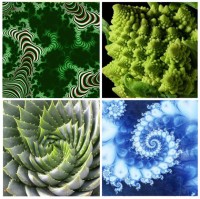
Figure 7 : Fractals generated by computer programs and nature are isoforms of nonlinear psychedelic hallucinations.
If the human imagination is infinite, and if psychedelics can expand the capacity of human imagination, then psychedelics can paradoxically make the infinite even more infinite. This makes sense if you accept that infinity is a linear concept which starts at zero and goes in one direction forever; but if infinity is bent into a series of repeating loops and spirals then it begins to look more like a fractal than a line, and thus more psychedelic (Fig. 7). Human perception is linear, but humans live in a nonlinear system. Psychedelics destabilize linear perceptions of space and time to produce fractal states of frame layering, bifurcation, and infinite frame recursion. This allows perception to exist in multiple states at once, much like a quantum computer that processes multiple simultaneous probabilities. If normal human imagination is bound within the limits of linear infinity, psychedelic perception is expanded to the limits of exponential or fractal infinity. Psychedelic perception presents a progressive nonlinear bifurcation of recursive self-similar information corresponding to both internal and external perceptual space. The psychedelic layering, bifurcating, and regression of internal and external perceptions creates a timeless, transpersonal perspective of what might be called a nonlinear, fractal, or holographic rendering of time and space.26

Figure 8 : Mandalas and calendars representing universal harmony and knowledge. Top row: a Kalachakra time-wheel mandala; and a Mayan calendar. Bottom row: a mandala of the enlightened Buddha; and a mandala of the Wheel of Life (Bhavacakra, or samsara).
The perception of seeing all time and space unfolding in a single moment is a theme that has been reproduced in Eastern mandalas and Mesoamerican calendars for thousands of years, where a central figure sits in the center of concentric interlocking rings of reality (Fig. 8). In Sanskrit this great wheel of time is called Kalachakra (time wheel), and Kalachakra yoga emphasizes the interlocking self-similarity of body cycles and celestial cycles.27 The description of Kalachakra overlaps with Mesoamerican cyclical calendars and spiritual themes, expressed by Maria Sabina, the Oaxacan healer who first shared the magic mushroom known as Teonanacatl with R. Gordon Wasson. Sabina said, “The more you go inside the world of Teonanacatl… you see our past and our future, which are there together as a thing already achieved, already happened… I knew and saw God: an immense clock that ticks, the spheres that go slowly around, and inside the stars, the earth, the entire universe, the day, the night… He who knows to the end the secret of Teonanacatl can even see that infinite clockwork.”28 This is undoubtedly a reference to Kalachakra, the great wheel of time.
Witnessing the timeless infinity of Kalachakra can be compared to Western models of Hermeticism (“As Above, So Below”) where the pinnacle of mystical achievement is channeling the infinite wisdom of the universal spirit;29 or early Deist notions of a God as a great Clockmaker who set the universe in motion and let it run without intervention.30 According to Maria Sabina’s report, the subjective experience of the infinite clockwork is an end secret of psychedelic vision; this is where you arrive if you follow the process of fractal information regression to the beginning and end of all time. The thought of experiencing Kalachakra as expressed by Maria Sabina stretches the boundaries of believability, but the subjective reports of a timeless, infinite psychedelic space where the size of the universe is revealed and everything in the past and the future has already occurred is common enough to conclude that this experience is not only possible, but that it might also be the final end-point of expanded human consciousness. 31
« Previous Chapter | Contents | Next Chapter »
[1] WikiPedia.org, 'Visible spectrum'. Internet Reference, 2010.
[2] Robert E. Miller II, Col, USAF, (RET) and Thomas J. Tredici, Col, USAF, (RET), 'The Eye and Night Vision'. USAF Special Report, AL-SR-1992-0002, 'Night Vision Manual for the Flight Surgeon'
[3] Accounts of saturated green and violet colors seen in closed-eye tryptamine hallucinations are taken from subjective reports.
[4] Hill RM, Fischer R, 'Interpretation of visual space under drug-induced ergotropic and trophotropic arousal'. Agents Actions. 1971 Nov;2(3):122-30.
[5] Fischer R, Hill R, Thatcher K, Scheib J., 'Psilocybin-induced contraction of nearby visual space'. Agents Actions. 1970 Aug;1(4):190-7.
[6] Fischer R, Hill RM, Warshay D, 'Effects of psychodysleptic drug psilocybin on visual perception. Changes in brightness preference.'. Experientia. 1969 Feb 15;25(2):166-9.
[7] Accounts of seeing auras, electromagnetic noise, and other spectral artifacts are taken from subjective reports of psychedelic hallucination. Casual tests to predict the accuracy and frequency range of extra-spectral claims have been inconclusive.
[8] Deering MF, 'Limits of Human Vision'. Sun Microsystems Internal, 1998
[9] WikiPedia.org, 'Electroencephalography'. Internet Reference, 2010.
[10] WikiPedia.org, 'Subliminal stimuli'. Internet Reference, 2010.
[11] VanRullen R, Pascual-Leone A, Battelli L, 'The Continuous Wagon Wheel Illusion and the ‘When’ Pathway of the Right Parietal Lobe: A Repetitive Transcranial Magnetic Stimulation Study'. PLoS ONE 3(8): e2911. August 6, 2008.
[12] WikiPedia.org, 'Wagon wheel effect'. Internet Reference, 2010.
[13] Bach M, 'Wagon-wheel effect'. From Michael’s Optical Illusions & Visual Phenomena. Internet Reference, 2010.
[14] VanRullen, Rufin, 'The continuous Wagon Wheel Illusion is object-based'. Vision Research Volume 46, Issue 24, November 2006, Pages 4091-4095.
[15] WikiPedia.org, 'Working memory'. Internet Reference, 2010.
[16] See "Erratic Hallucination"
[17] WikiPedia.org, 'Retina'. Internet Reference, 2010.
[18] Gutkin, Pinto, Ermentrout, 'Mathematical Neuroscience: From Neurons to Circuits to Systems'. Journal of Physiology - Paris 97 (2003) 209–219.
[19] LeDoux, Joseph, 'Synaptic Self'. Viking Penguin, NY, 2002.
[20] WikiPedia.org, 'Peripheral drift illusion'. Internet Reference, 2008.
[21] WikiPedia.org, 'Grid illusion'. Internet Reference, 2010.
[22] Pinna, Baingio, 'Pinna Illusion'. Scholarpedia, 4(2):6656, 2009.
[23] The low rendering capacity of human visual imagination is taken from a survey of subjective reports. The quality of internal visualization can only be enhanced by closing the eyes for a few moments and falling into a state more like meditating or daydreaming than attentive wakefulness.
[24] Hobson, J. Allan, 'The Dream Drugstore: Chemically Altered States of Consciousness'. MIT Press, 2001.
[25] Hobson JA, Stickgold R, Pace-Schott EF, 'The neuropsychology of REM sleep dreaming'. NeuroReport: 16 February 1998 - Volume 9 - Issue 3 - p R1-R14
[26] A system can be considered holographic if each unit within that system contains a compressed representation of the entire system. For example, organisms are holographic because they contain DNA compressed within each cell. The universe is metaphorically holographic because the atom is isomorphic of a solar system or a galaxy, but this is not a true holographic construction because you cannot reproduce an entire universe from the information in a single atom. In contrast, fractals are systems that repeat instructions over and over to form recurring embedded patterns from microscopic to macroscopic scales. Just as an organism is a holographic representation of its DNA, a fractal is a holographic representation of its algorithm recurring through time and space.
[27] WikiPedia.org, 'Kalachakra'. Internet Reference, 2010.
[28] Schultes, Hofmann, 'Plants of the Gods'. Healing Arts Press, Vermont, 1992.
[29] WikiPedia.org, 'Hermeticism'. Internet Reference, 2010.
[30] WikiPedia.org, 'Watchmaker analogy'. Internet Reference, 2010.
[31] Exploring the mystical implications of Kalachakra, the great fractal time wheel, has filled many volumes and fueled many prophecies. There is a solid case to be made that Kalachakra is the pinnacle of all mystical achievement; the end of psychedelic exploration; and the ultimate endpoint of human consciousness. If the psychedelic Godhead is a transcendent state of infinite universal all-consciousness, it is doubtful that anything more complex or expansive can ever be experienced by the human mind, marking the functional end of expanded consciousness.
Citation: Kent, James L. Psychedelic Information Theory: Shamanism in the Age of Reason, Chapter 04, 'Limits of Human Perception'. PIT Press, Seattle, 2010.
Keywords: vision, perception, consciounsess, psychedelics
Copyright: © James L. Kent, 2010. Some Rights Reserved. Please read copyright information before reproducing.

